Editor’s Note: A recent story on Sen. Lankford’s Massive Tulsa National Park on Substack referenced Ed Wheeler’s story published in 1997 on TulsaToday.com. Wheeler’s story went first to the printer in the 1971 June-July issue of Impact Magazine. His investigative report proves false the national narrative that the civil conflict in Tulsa had been hidden until 2021 (The first Tulsa Today posting in 1997 is available on the Internet Archive Wayback Machine) and, second, the event in 1921 was a massacre. it was not. Here is the story as it was first published in 1971.
IT HAPPENED IN TULSA
This is a story of a race riot.
It is not a pretty story, and it is not told for its shock value or to reopen old wounds.
It is presented because it happened fifty years ago to another generation whose story is pertinent to a contemporary generation.
The date was June 2, 1921.
The place was Tulsa, Oklahoma.
The Tulsa World headline read, “DEAD ESTIMATED AT 100-CITY IS QUIET.
One of the bloodiest race riots in the nation’s history had finally ended.
In the aftermath, knowledgeable estimates ran as high as 300 dead.
Within 24 hours, 184 negroes and 48 whites were hospitalized for surgical care and 531 more were treated for various injuries.
The total of 763 did not include wounded refugees who were treated at Muskogee, Sapulpa, Bartlesville and as far north as Kansas City. The death totals did not include those who died later of their wounds or were buried in unmarked graves.
During the riot, thirty-five city blocks were completely looted and burned to the ground. Property losses far exceeded the initial estimate of $4 million.
Martial law was declared by Governor J.B.A. Robertson and the Oklahoma National Guard used seven companies of armed guardsmen from Tulsa, Wagoner, Oklahoma City, Bartlesville and Muskogee along with two companies of regulars from Fort Sill to enforce the orders of Adjutant General Charles F. Barrett.
During and immediately following the riot, negro citizens were arrested if discovered on the streets without green cardboard tags countersigned by their employers.
The Tulsa Fairgrounds was used as an internment camp for negroes and whites arrested during the riot. It was guarded by thirteen Oklahoma guardsmen from the 3rd Infantry division who were “armed and fully equipped.”
The negro community was summarily informed by insurance companies holding policies on property in the stricken area that “unless they wish to prove that either the city or state was negligent in the protection of that property, they would suffer total loss since the policies provided that destruction by fire caused by rioting or civil insurrection, renders the company writing the policy.”
The Mount Zion Baptist Church which had been built at a cost of $84,000 and dedicated to serve the negro community less than six weeks before, lay gutted and charred. The parishioners who had borrowed $50,000 to help pay for the church and had signed the note a few weeks before, suddenly found themselves that much in debt and nothing to show for it. it is to their everlasting credit that the congregation voted to pay back the money, a process which would take 21 years.
The blame for the riot was heaped upon, “negroes of the lower class — gamblers and bootleggers” and “a group of negroes who . . . had been worked upon by a law less element of white agitators, reds and bolsheviks.”
But this was hogwash.
Intolerance, anger, rumor-mongering and fear fanned its flames.
Such elements were prevalent in abundance on both sides of the racial fence.
In addition, Tulsa was a sharply divided city in 1921.
The Ku Klux Klan was a viable, anachronistic organization that possessed political “clout” in the Oklahoma of the later period of the second decade of the 1900’s and into 1921. In fact, it was so strong that it surfaced in Tulsa to construct a headquarters building. White citizens who opposed the Klan, and there were many, did not oppose it enough.
The negro population was confined to a ghetto (e.g. a quarter of a city in which members of a minority group live because of economic, legal or social pressure.)
The negro ghetto centered on Greenwood Avenue, north of Archer street in an area that was known as “Little Africa.” Little Africa had gotten its name from the fact that it was a thriving business community created by and for the black citizenry. It was known throughout the country as a place for negroes to prove themselves. Negro-owned businesses grew and prospered and many blacks moved to Tulsa’s Little Africa when faced with frustration, oppression, and lack of opportunities elsewhere. However, despite the relative prosperity, the area was still poverty with a high degree of illiteracy and drug addiction.
In the white portion of the city, little was said and less was done to help the negro population. Some service organizations such as the American Red Cross did work to help the negro, but such white organizations were understaffed, under financed and hindered by an oppressive “don’t rock the boat” philosophy on the part of the rest of the white citizenry.
Making any productive communication between the races difficult to impossible were the Klansmen and their sympathizers. Such people took out their frustrations, intolerance and assumption of racial superiority on the “coloreds” whenever the situation presented itself. As a self-anointed social “posse,” these elements provided the impetus behind maintaining the racial division, ostracized any white citizens who attempted to ease the racial bars and opposed any effective attempt to establish inter-racial communication designed to mediate differences.
It was within this environment that a riot of monumental proportions developed.
The spark for the tinder was ignited on Monday, May 30, 1921.
Dick Rowland, a young negro bootblack entered an elevator in the Drexel Building. The operator of the elevator was Mrs. Sarah Page, a white woman.
Mrs. Page reported to the police later that “when he grabbed my arm, I screamed and he fled.” It was never determined why Rowland grabbed Mrs. Page’s arm, if in fact he did.
The police were notified of the elevator incident and conducted an investigation.
The chief of detectives, James Patton, later said, “The police were quietly conducting an investigation of the alleged assault before taking any action. We intended, in case the affair warranted it to have the negro prosecuted upon a state charge.”
Then Patton continued, “But when an afternoon paper came out with a colored and untrue account, so far as we have been able to ascertain of the entire affair, we concluded that it would be best for the safety of the negro to place him behind the bars of the county jail.”
County sheriff William McCullough later testified that in the late afternoon of Tuesday, May 31, the chief of police John A. Gustafson and J.M. Adkison, Police commissioner for the City of Tulsa reported to him that a white mob was gathering to descent upon the county jail and invite Dick Rowland to be the principal guest at a lynching party.
Sheriff McCullough then lodged Rowland on the fourth floor of the Tulsa county courthouse, surrounded him with eight deputies and shut off the power to the courthouse elevator leading to the upper floors.
McCullough, in testimony before a Grand Jury after stated, “It would have been impossible for a mob to have gotten the negro because the only entrance to the jail was by means of a narrow stairway up which only one man at a time could go. And at the top was a steel door leading into the jail. One man could have stood at the top and kept down an army, and I have several men up there.”
The time was 4:00 PM, Tuesday, May 31, 1921.
Within an hour, a large crowd of unarmed whites congregated around the county courthouse. Rumors ran rampant that the courthouse would soon be stormed to “get and lynch that bad nigger.”
Sheriff McCollough upon viewing the growing crowd, left the courthouse and appeared before the white crowd where several white men loudly demanded that the negro prisoner be turned over to them at the south entrance of the courthouse.
The crowd grew increasingly ugly. Whites continued to arrive to reinforce the original crowd. new arrivals carried firearms openly.
Meanwhile the story of what had happened and was happening at the courthouse made its way to Little Africa.
Negro men began to collect in groups on Greenwood Avenue with many arming themselves with rifles and pistols. Then they moved downtown toward the courthouse.
The time was 9:00 PM, Tuesday May 31, 1921.
A band of more than 300 negroes, many of whom were armed, had gathered at the west entrance of the courthouse. Leaders of the crowd demanded of the law enforcement officials to turn Rowland over to them for protection.
Barney Cleaver, negro deputy sheriff, stepped out of the west entrance door and confronted the black crowd. He said, “Boys, you are not doing right. There isn’t anybody going to get that boy tonight. He is perfectly safe here. You shouldn’t have done this thing for it only stirs up race trouble. Go on home and behave yourselves.”
With that the negro crowd began to disperse reluctantly.
However the white crowd at the south entrance was not so docile.
The whites refused to disperse and became more aggressive in their demands under the goading of mob leaders who harangued them to action.
Despite the assurances of Cleaver to the negro crowd which was in the process of leaving, it became apparent to many of them that the whites were still gathered in force at the courthouse and their mood was growing increasingly out of control by the minute.
The blacks, many of whom remembered the lynching of Roy Belton, during the previous autumn of 1920 [in Oklahoma City] began to drift back toward the courthouse.
Cars began to arrive in the courthouse area. Most of the cars were filled with both armed blacks and whites.
According to Sheriff McCullough’s testimony, made later before a Grand Jury, some of the cars had as many as twenty armed men on each. They “parked in front of the courthouse, circled the block and drove south on Boulder . . . and east on Sixth.”
In many cases according to a Tulsa World reporter’s account, “prominent business and professional men remained at the wheel and piloted the armed men about the city.”
The tension between the two mobs at the courthouse had reached fever pitch. Armed blacks and whites confronted each other, swore and hooted one another; jeered and ridiculed law enforcement officers and harassed by-standers.
The time was 10:00 PM, Tuesday, May 31, 1921.
Shots were heard in the downtown area.
When two wounded negroes were brought to the police station their presence seemed to inflame both mobs.
Almost simultaneously the black and white mobs began firing at one another. According to eyewitness accounts, “Hundreds of shots were fired in the small time of three minutes.” When Andy Brown, a negro civic leader attempted to stop the firing and talk his fellow blacks into returning home, a black member of the mob walked up to him and shot him at point blank range.
Shooting duels erupted and firing was heard throughout the entire downtown business section as the mobs divided into the panic that was quickly gripping everyone present.
Part of the armed white mob marched north on Main Street, Boulder Avenue and Boston Avenue driving fleeing negroes before them.
The remainder of the white mob remained at the courthouse and leaders incited the rest to “get the niggers.” At the same time a mob of negroes marched south on Boulder Avenue and met the white mob on Boulder in a fusillade of rifle and pistol fire, wounding one white and one negro.
Pawn shops and hardware stores were immediately broken into, looted by both black and white mobs and stripped of firearms, ammunition and anything of value. Some were set afire.
Cars with armed men firing at any available target and armed men on foot running pell-mell through the streets infested the downtown business section. The firing grew in intensity and wounded from both sides began to arrive at city hospitals.
Bystanders were gunned down for no reason other than the fact they were convenient targets.
When the firing started, A.B. Stick, 29-year old city clerk of Sapulpa, left the Hotel Tulsa on the Cincinnati exit to see what has happening. He was immediately shot in the back.
The time was 10:30 PM, Tuesday, May 31, 1921.
People caught on the streets in the downtown area ran for cover. Rifle and pistol fire and ricochets filled the air. The sounds of firing, breaking glass, gunning car motors, ambulances bells and the crackling of fire set by arsonists added to the din.
A virtual war had begun in downtown Tulsa.
People, both men and women, ran through the streets firing their pistols, rifles and shotguns while yelling, screaming and shouting.
Meanwhile the two mobs gradually began to centralize while armed motorized patrols continued to screen the periphery of the business area.
The negro mob of approximately 1,000 but who were lightly armed, were driven back by a smaller mob of 500 whites who were more heavily armed.
The time was 11:15 PM, Tuesday, May 31, 1921.
Eyewitnesses reported that Main Street near Fourth was dotted with bodies. A half an hour later, the main business section was in the hands of the white mob with as many as “ten cars in a single block bristling with guns.”
Midnight, May 31, 1921.
An estimated 45 cars were patrolling the streets filled with armed whites hunting blacks and summarily executing any that were found.
When a rumor made the rounds that “several hundred armed negroes were on their way (from Muskogee) to the city to assist Tulsa negroes should the fighting continue,” the chief of police turned over a police-owned machine gun to a crew of white men, posted it on a flatbed truck and set it east of the city with orders “to stop at all hazards these armed men.” In turn, the Muskogee police department placed roadblocks around Muskogee with orders to turn back any negroes from leaving the city for any reason.
The time was 12:30 AM, June 1, 1921.
The riot had not yet reached its full intensity.
An armed mob of whites, scouring the vicinity of the Frisco Railway station after an attack by a black mob, mistook a lone white man for a negro. The mob immediately fired more than 25 shots in the innocent bystander. His remains were beyond identification.
At the same time the bystander was being gunned down at the railway station, a lone white man stumbled into a crowd of approximately 1,000 negroes North of the Frisco depot. he was immediately attacked and beaten into a bloody pulp.
Between 12:30 AM and 1:00 AM, the mayor and the chief of police signed a message to Governor Robertson informing him that the riot had gone beyond the control of local authorities and requesting assistance. The Governor in turn ordered out the Oklahoma National Guard and requested two companies of regular troops from Fort Sill.
1:00 AM, June 1, 1921.
The bulk of the black mob was separated from the whites who occupied the downtown business area of the city while white motorized patrols reconnoitered north of the business section.
A temporary, but uneasy quiet settled on the city.
Meanwhile, thousands of white men women and even children gathered in the downtown business area. Most of the mob was heavily armed and offered its services to the law enforcement officers as long as they could “shoot some niggers.”
When the first national guard contingent arrived under command of Major L.J.F. Rooney, cheers went up from the white mob which shouted, “Now let the niggers come if they dare.” It was a classic case of too little – too late. A couple of companies of national guardsmen were no match for what was estimated to be more than 3,000 armed white and black rioters in open combat with one another.
2:30 AM, June 1, 1921.
The negro mob had been driven to Little Africa and along a half a block of business structures on north Cincinnati between the Frisco railroad and Archer street. Negroes who took refuge in the buildings along this strip were engaged in a hot battle with armed whites and finally were driven out toward Greenwood Avenue, the principal negro business section of Little Africa.
The battle raged throughout the early morning hours.
As the negroes defended and then retreated from buildings, pawn shops, stores and offices, whites would invade them, loot everything of value, pile combustible material in the middle of the floor and set it afire.
Greenwood Avenue was soon engulfed in flames. Burning negro residences and businesses illuminated a rampaging white mob that was killing, looting and burning.
Negroes began to flee. Reports began to arrive from Collinsville, Turley and Bartlesville that negro refugees where flooding the roads into those communities.
Eyewitnesses later testified that whites in cars would roar down negro residential areas and spray shotgun and rifle fire indiscriminately into homes, businesses and men women and children in their line of fire.
A red glow lit up the sky of north Tulsa. The entire business section of Little Africa had been put to the torch. Over 860 stores and homes were being consumed in the fire and the maddened white mob threatened to shoot any fireman who attempted to lay hose or put out the fires.
Dawn, June 1, 1921.
The fire raged throughout the morning. The white mob continued to loot and burn. Firing was by then almost entirely confined to Little Africa and casualties began to mount so fast that the national guardsmen and police had to divert their forces from attempting to stop the white mob to picking up bodies, loading them on trucks and evacuating them.
Negro resistance had been broken and the white rioters took full advantage of the situation. Many members of the mob related that the whole affair was “exciting.”
9:00 AM, June 1, 1921
Adjutant General Charles F. Barrett published the Governor’s decree of martial law. Immediately national guardsmen took control of policing the city. Convention Hall, McNulty Ball Park and the Tulsa Fairgrounds were established as interment centers for persons detained for civil prosecution.
National guardsmen were then sent in force into Little Africa to arrest any person, white or black, involved in the rioting. The white mob was ordered to disarm and return to their homes.
Eventually more than 6,000 negroes and white rioters were apprehended by national guardsmen and taken to one of the three internment centers. Rumors continued to blanket the city despite the efforts of the national guard, that 25,000 white rioters were still running rampant and that national guard troops had mowed down negroes with machine guns, all of which were untrue.
While the national guard was fighting to obtain control of the burning city, the civic leaders attempted to explain the riot to the press. Alva J. Niles, president of the Tulsa chamber of commerce and former veteran of the Spanish-American War, Mexican border and World War I issued a statement to the Associated Press and United Press representatives as well as other press from around the nation who had come to Tulsa to cover the riot story. He said, “A minor arrest had been made and publicly announced, the defendant being a negro boy. under bad advice and led by a group of negroes exhibiting a spirit of lawlessness, a group of probably fifty negroes left the negro section of the city, came through the business section and marched on the courthouse. There was no occasion for their coming. The member of their race was not in jeopardy at all, but under the inflammatory action of lawless negro leaders, demands were made of the sheriff and insults hurled at the white citizens attracted by the negro mob. The shooting began and the riot was on.”
Clarence B. Douglas, a former colonel and early Tulsa historian stated, “a vicious white influence has been at work among the negroes aided and abetted by vicious members of the negro race; that meetings were held, incendiary speeches made and that preparations for racial trouble had been made by the assembling of a large amount of high powered ammunition and modern weapons of offense.”
William Cherry, brother of Jim Cherry who was a negro constable stated, “That fellow Dick Rowland should have been taken out to the edge of town and horsewhipped, tarred and feathered. he is one of the same bunch that started this awful thing.”
These statements were given coverage and came to represent the official civic position.
As the national guard fought for control of the area through the evening of June 1 and throughout the day of Thursday, june 2 civic organizations were organized such as the Tulsa Executive Welfare Committee to assist the victims. Other organizations such as the American Red Cross were augmented as well as the national guard itself. It was reinforced by approximately one hundred American Legionnaire World War I veterans who were sworn in as “special officers” to enforce the law.
On June 2, Adjutant General Charles Barrett issues Field Order Number 4 which directed that “all able bodied negro men remaining in detention camp at the Fairgrounds and other places in the City of Tulsa will be required to render such service and perform such labor as is required by the military commission and the Red Cross in making the proper sanitary provisions for the care of refugees.”
Friday, June 3, 1921.
Governor Robertson, in a public criticism of local city officials demanded the calling of a Grand Jury to investigate the causes of the riot and return indictment where appropriate. (One of the results of the Grand Jury report would be the impeachment and conviction of chief of police John A. Gustafson who was suspended and later convicted in a district court trial “for failure to take proper precautions for the protection of life and property during the rioting . . . and conspiracy to free automobile thieves and collect rewards.”
At 3:00 PM, Adjutant General Charles Barrett revoked the state of martial law and the national guard turned the city back over to the local civil officials.
Before declaring cessation of military rule, Barrett reported that through a check of causalities ordered on Thursday, June 2, only 30 were known dead, 10 whites and 20 negroes. Other officials indicated that with the discovery of any additional bodies, the actual total would not go beyond forty causalities.
By Saturday, June 4, the city was quiet.
The fury of the riot had spent itself and even the ever multiplying rumors began to die away.
The local officials took control and over the next few weeks, negroes found themselves denied the sale or possession of firearms or weapons of any kind, forced by municipal edict to have identification tags on their person when found on the street, if employed they were ordered to wear green “job” tags countersigned by their employer and their movements were highly restricted.
Even whites were ordered not to permit any negro not employed by them, to occupy any building on their property. This directive was aimed at the families of domestics who had moved in with them in the servants quarters in the white suburbs. This arrangement, although approved by the owners, nevertheless apparently made certain white neighbors nervous.
Eventually Little Africa was rebuilt and the agony and pain of the riot slipped out of the limelight.
Following the riot, it became evident that in the midst of the looting, burning and killing by both sides, there were many instances of heroism, generosity and brotherhood offered by both blacks and whites to one another. This was some small consolation.
But in the aftermath of the riot, little change became evident.
The negroes moved back to their “ghetto” with its disease, illiteracy and narcotics problem of epidemic proportions. The whites settled back to whisper in their cocktail parties about the “coloreds,” make profound public pronouncements for political purposes in election campaigns about helping “those less fortunate” and then continued to maintain the status quo.
_______________________________________________________________________________________
The following was published as this site’s Editor’s Note on June 11, 1997 when Ed Wheeler’s 1971 story was first posted online. Contrary to many national publications that have claimed since that the story was hidden, it was not.
1997 Editor’s Note: A Tulsa Today reader asked for the true story behind Tulsa’s most infamous and deadly race conflict soon after the launch of this site and it was published in June 1997 and republished today. Maybe we should run it once a year at least.
At work, the reader had received a version of the events June 1, 1921 written with great anger. That version said the World Book Encyclopedia contained no mention of the event under “riots, Oklahoma and Tulsa” and implied a conspiracy. However, we found it listed under “Race War” which is the most concise and accurate title for the day both white and black citizens grabbed their guns and ran to kill each other.
Several attempts have been made to tell the complete saga, but Tulsa Today sought out Ed Wheeler, the historical writer that first broke this story in 1971. Wheeler is an internationally recognized historical writer, once general manager of corporate communications for one of Oklahoma’s largest utilities and, at another time, the Task Force Commander Oklahoma National Guard during the Persian Gulf War. Brigadier General Ed Wheeler, ASU (Ret) took 2,000 Oklahoma soldiers to war and returned 2,000 home alive.
As Wheeler began his research in the early 70s, it quickly became obvious this was not a story some people wanted told. Strangers approached him to warn against publication. He moved his children out of his home. “I received direct threats,” Wheeler said.
Wheeler interviewed ninety survivors, searched the records and was chilled to discover that official accounts of the conflict from the Oklahoma National Guard, Tulsa County Sheriff and the Tulsa Police Department had disappeared. “It took someone with a great deal of influence to accomplish that — the lack of records is astounding. You could count more bodies in the pictures [that survivors retain] than the official body count,” Wheeler said.
The story was originally commissioned by the editor of the Metropolitan Tulsa Chamber of Commerce’s monthly magazine. However, when Executive Director Clyde Cole read the piece he forbid publication. “He said it would cause a riot,” Wheeler said. “The editor’s of the daily newspapers said they wouldn’t touch the story with an eleven foot pole.”
Eventually the story was printed in the 1971 June-July issue of Impact Magazine.

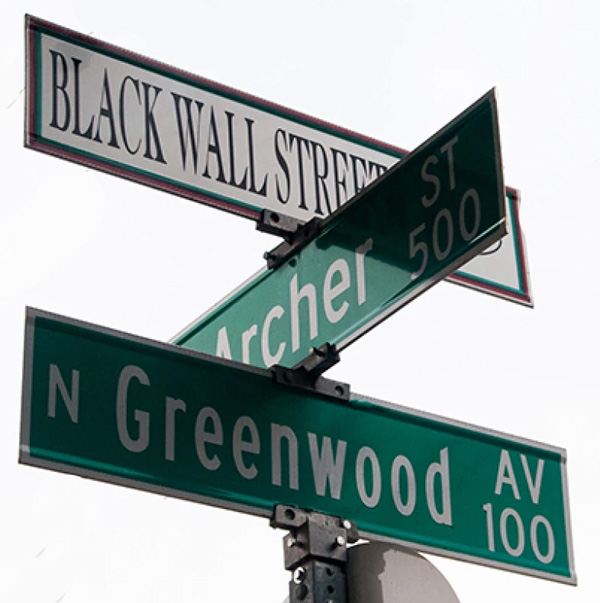
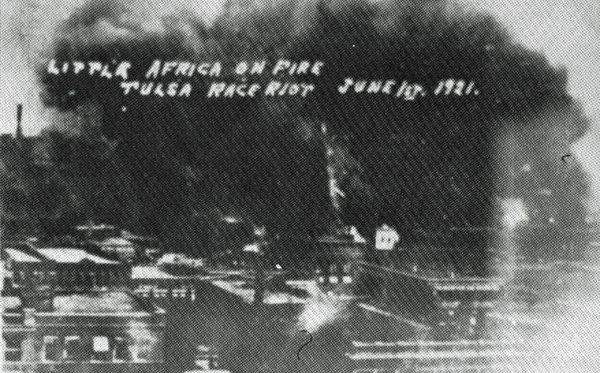
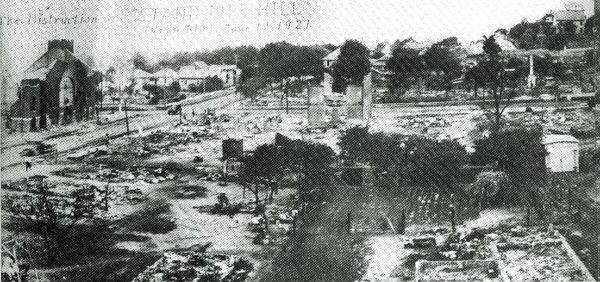

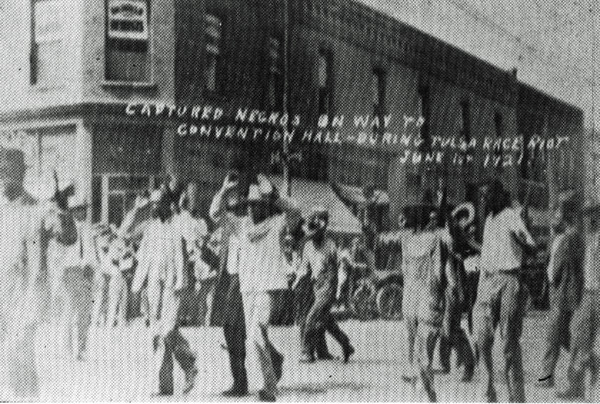
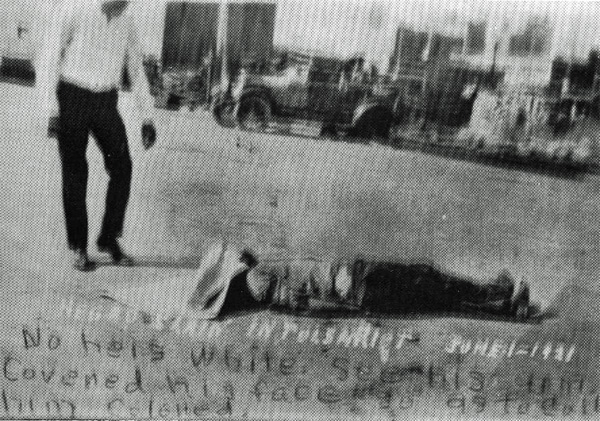
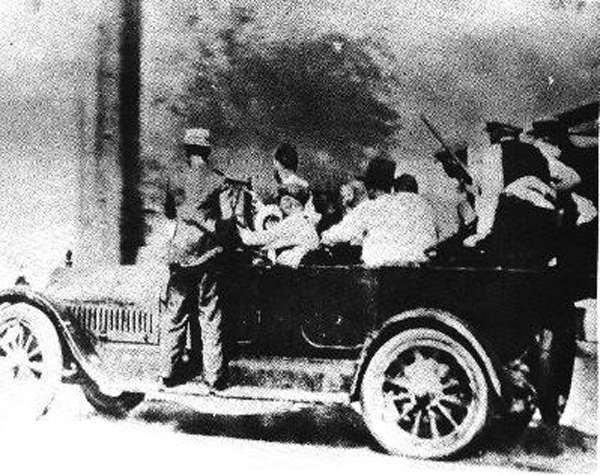
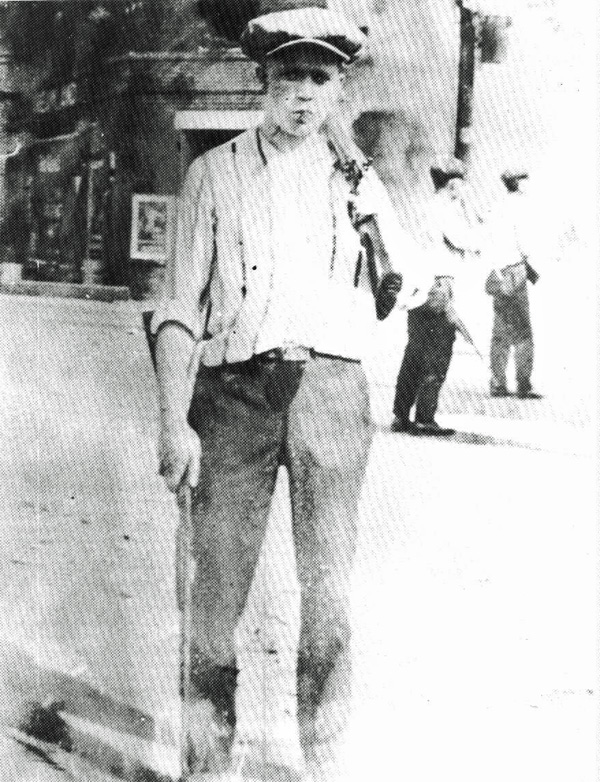

Local government officials are still attempting to hide the truth about this massacre 100 years later. Still searching for bodies, still searching for the truth. No blame, just the unvarnished truth.